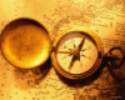Objective: Student will demonstrate a basic familiarity with various resources available via the Oviatt Library.
Readings:
I would suggest that you read chapter 2 (by Mick Healy: How to Conduct a Literature Search) in the Clifford and Valentine text first. This may help you kill two birds with one stone. As you head toward you date with graduation, you'll have to take Geography 490, the senior thesis class. In that course, you will be asked to write a senior thesis, which you will present before the class and much of the departmental faculty. This chapter will alert you to some of the issues that you will confront in 490. Armed with this, you can be formulating a plan of action. Besides, you'll have to take the reading quiz over this chapter anyway.
Assignment:
Below are a series of "tasks" that you will complete in order to answer the questions below. You will fill in the answers in the response boxes below. You will need to pay a visit (IN PERSON) to the library itself in order to complete this assignment. You may want to print out the assignment and fill in the answer with a pencil until you are ready to submit the answers on-line.
** GET YOUR OVIATT LIBRARY ACCOUNT ACTIVATED IF YOU HAVE NOT YET.



